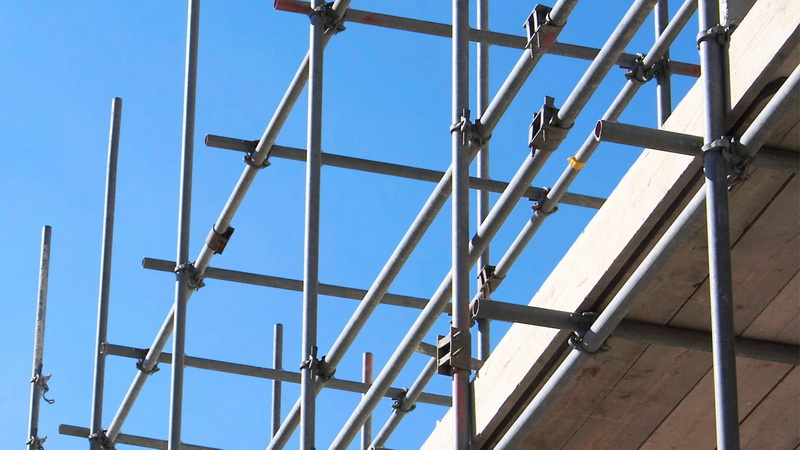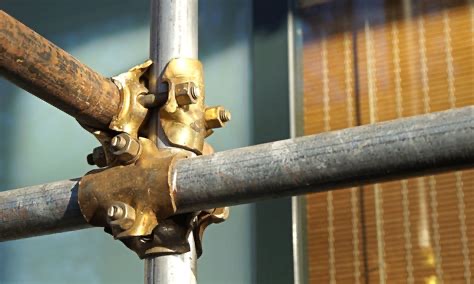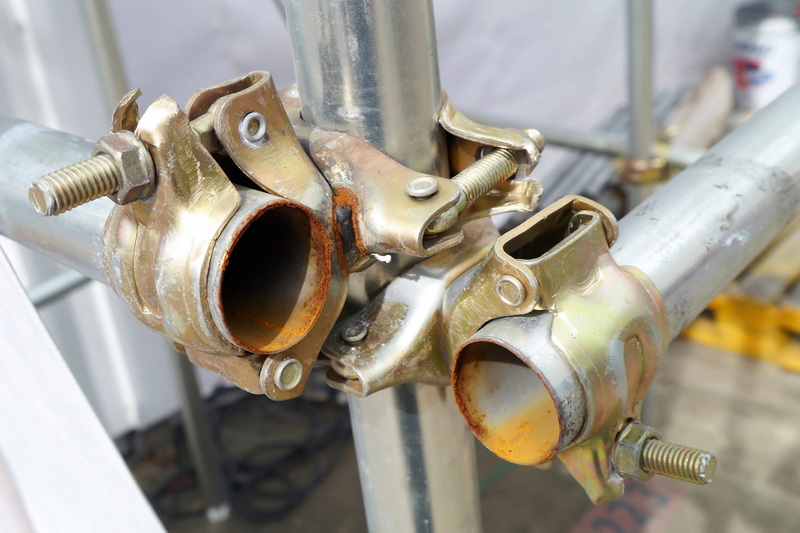Content Menu
● Introduction to Tube and Clamp Scaffolding
● Components of Tube and Clamp Scaffolding
>> Right Angle Clamps
>> Swivel Clamps
>> Sleeve Couplers
● Assembly Process
● Common Applications of Tube and Clamp Scaffolding
>> High-Rise Buildings
>> Bridge Projects
>> Water Conservancy Projects
>> Industrial and Refinery Projects
>> Residential and Commercial Construction
● Benefits of Tube and Clamp Scaffolding
>> Flexibility and Adaptability
>> Cost-Effectiveness
>> Safety
● Conclusion
● FAQ
>> 1. What are the primary components of tube and clamp scaffolding?
>> 2. What types of clamps are commonly used in tube and clamp scaffolding?
>> 3. What are the benefits of using tube and clamp scaffolding?
>> 4. In what types of projects is tube and clamp scaffolding commonly used?
>> 5. How is tube and clamp scaffolding assembled and dismantled?
● Citations:
Tube and clamp scaffolding is a versatile and widely used system in the construction industry, known for its flexibility and adaptability to various project requirements. This scaffolding system consists of steel or aluminum tubes and clamps, which are used to create custom scaffolding structures for different applications. In this article, we will explore the common applications of tube and clamp scaffolding components, their benefits, and how they are used in various construction projects.

Introduction to Tube and Clamp Scaffolding
Tube and clamp scaffolding, also known as tube and coupler scaffolding, is a traditional yet highly effective scaffolding system. It is composed of steel tubes and clamps that are used to form a framework for temporary work platforms at various heights. The system is highly adaptable, allowing workers to adjust it according to the specific requirements of the job.
Components of Tube and Clamp Scaffolding
The primary components of tube and clamp scaffolding include:
- Steel Tubes: These are the main structural elements that provide the framework for the scaffold. They can be used vertically or horizontally to support the structure.
- Clamps (Couplers): These are used to connect the steel tubes together. Common types include right angle clamps, swivel clamps, and sleeve couplers.
Right Angle Clamps
Right angle clamps are used to connect tubes at 90-degree angles, forming the basic framework of the scaffold.
Swivel Clamps
Swivel clamps are used to join tubes at any angle, providing flexibility in the design and allowing for diagonal bracing to enhance stability.
Sleeve Couplers
Sleeve couplers are used to extend the length of scaffold runs by joining tubes end-to-end.
Assembly Process
The assembly of tube and clamp scaffolding involves several key steps:
1. Planning and Design:
- Assess the project's specific needs, including height, load-bearing capacity, and shape. The scaffolding design is customized based on the structure's complexity to ensure safety and accessibility.
2. Assembly of Vertical and Horizontal Components:
- Vertical Standards: Steel tubes are set vertically at regular intervals to form the main support structure.
- Horizontal Ledgers: Horizontal tubes are clamped between the vertical tubes to form the scaffold framework.
- Connection Points: Tubes are joined together with clamps, which are tightened securely to hold everything in place.
3. Installation of Diagonal Braces:
- Diagonal braces are added to enhance the overall stability of the scaffolding and prevent lateral movement.
- Braces can be adjusted based on the height and shape of the structure, ensuring a strong, secure foundation.
4. Platform Setup:
- Decking: Work platforms (wooden or metal planks) are placed on the horizontal ledgers to create a surface for workers.
- Safety Rails: Guardrails and toe boards are installed along the edges to prevent falls and ensure safety.
5. Inspection and Adjustment:
- Once assembled, the scaffolding is thoroughly inspected to check for any weaknesses or improper connections.
- If necessary, adjustments are made to ensure that the scaffold is level, stable, and safe to use.
6. Dismantling Process:
- Once the job is completed, the scaffolding is carefully dismantled by reversing the assembly process.
- Components such as tubes and clamps can be reused for future projects, making tube and clamp scaffolding an environmentally friendly option.

Common Applications of Tube and Clamp Scaffolding
Tube and clamp scaffolding is widely used in various construction projects due to its versatility and adaptability. Here are some of the common applications:
High-Rise Buildings
Tube and clamp scaffolding is often used in high-rise building construction for exterior work such as painting, window installation, and facade repairs. Its ability to be customized to fit complex building shapes makes it ideal for these projects.
Bridge Projects
In bridge construction and maintenance, tube and clamp scaffolding is used to provide access to hard-to-reach areas. Its stability and flexibility allow it to be used under various environmental conditions.
Water Conservancy Projects
For water conservancy projects, such as dam construction or canal maintenance, tube and clamp scaffolding provides a reliable platform for workers to perform tasks over water or in challenging terrain.
Industrial and Refinery Projects
In industrial settings like refineries and petrochemical plants, tube and clamp scaffolding is used for maintenance and repair tasks. Its robustness and ability to withstand heavy loads make it suitable for these environments.
Residential and Commercial Construction
In residential and commercial construction, tube and clamp scaffolding is used for tasks such as roofing, siding installation, and exterior renovations. Its ease of assembly and disassembly makes it efficient for smaller projects.
Benefits of Tube and Clamp Scaffolding
Flexibility and Adaptability
- Customization: Tube and clamp scaffolding can be tailored to fit the unique contours of any building or structure.
- Adjustability: The system allows for adjustments in height and shape, making it suitable for complex architectural designs.
Cost-Effectiveness
- Reusable Components: Tubes and clamps can be reused multiple times, reducing waste and costs associated with purchasing new materials.
- Efficient Storage and Transport: The system has a high volume-to-space ratio, making it easier to store and transport compared to other scaffolding types.
Safety
- Stability: The use of diagonal bracing and secure clamping ensures that the scaffold remains stable and safe for workers.
- Compliance with Standards: Tube and clamp scaffolding components meet or exceed safety standards such as OSHA and ANSI codes.
Conclusion
Tube and clamp scaffolding components are essential in the construction industry due to their versatility, adaptability, and cost-effectiveness. They provide a reliable and safe working platform for various construction projects, from high-rise buildings to industrial maintenance tasks. The ability to customize and adjust the scaffolding according to project needs makes it a preferred choice among construction professionals.

FAQ
1. What are the primary components of tube and clamp scaffolding?
Tube and clamp scaffolding consists of steel or aluminum tubes and clamps. The tubes provide the structural framework, while the clamps (couplers) connect these tubes together.
2. What types of clamps are commonly used in tube and clamp scaffolding?
Common types of clamps include right angle clamps, swivel clamps, and sleeve couplers. Right angle clamps connect tubes at 90 degrees, swivel clamps connect tubes at any angle, and sleeve couplers extend the length of scaffold runs.
3. What are the benefits of using tube and clamp scaffolding?
The benefits include flexibility and adaptability, cost-effectiveness due to reusable components, efficient storage and transport, and high safety standards.
4. In what types of projects is tube and clamp scaffolding commonly used?
Tube and clamp scaffolding is commonly used in high-rise buildings, bridge projects, water conservancy projects, industrial and refinery projects, and residential and commercial construction.
5. How is tube and clamp scaffolding assembled and dismantled?
Assembly involves setting up vertical standards, installing horizontal ledgers, adding diagonal braces, and setting up platforms. Dismantling involves reversing these steps to ensure safe and efficient removal of the scaffolding.
Citations:
[1] https://safewayscaffolding.co.uk/when-to-use-tube-and-clamp-scaffolding/
[2] https://www.youtube.com/watch?v=iUqDWjr6uok
[3] https://en.wikipedia.org/wiki/Tube_and_clamp_scaffold
[4] https://scaffoldtype.com/tube-and-coupler-scaffolding/
[5] https://www.youtube.com/watch?v=ZM6Tlh_NAnQ
[6] https://patents.google.com/patent/CN113418052A/zh
[7] https://apacsafety.com/tube-and-clamp-scaffolding/
[8] https://www.youtube.com/watch?v=veF4uSUtrEY
[9] https://patents.google.com/patent/CN101053134B/zh






















